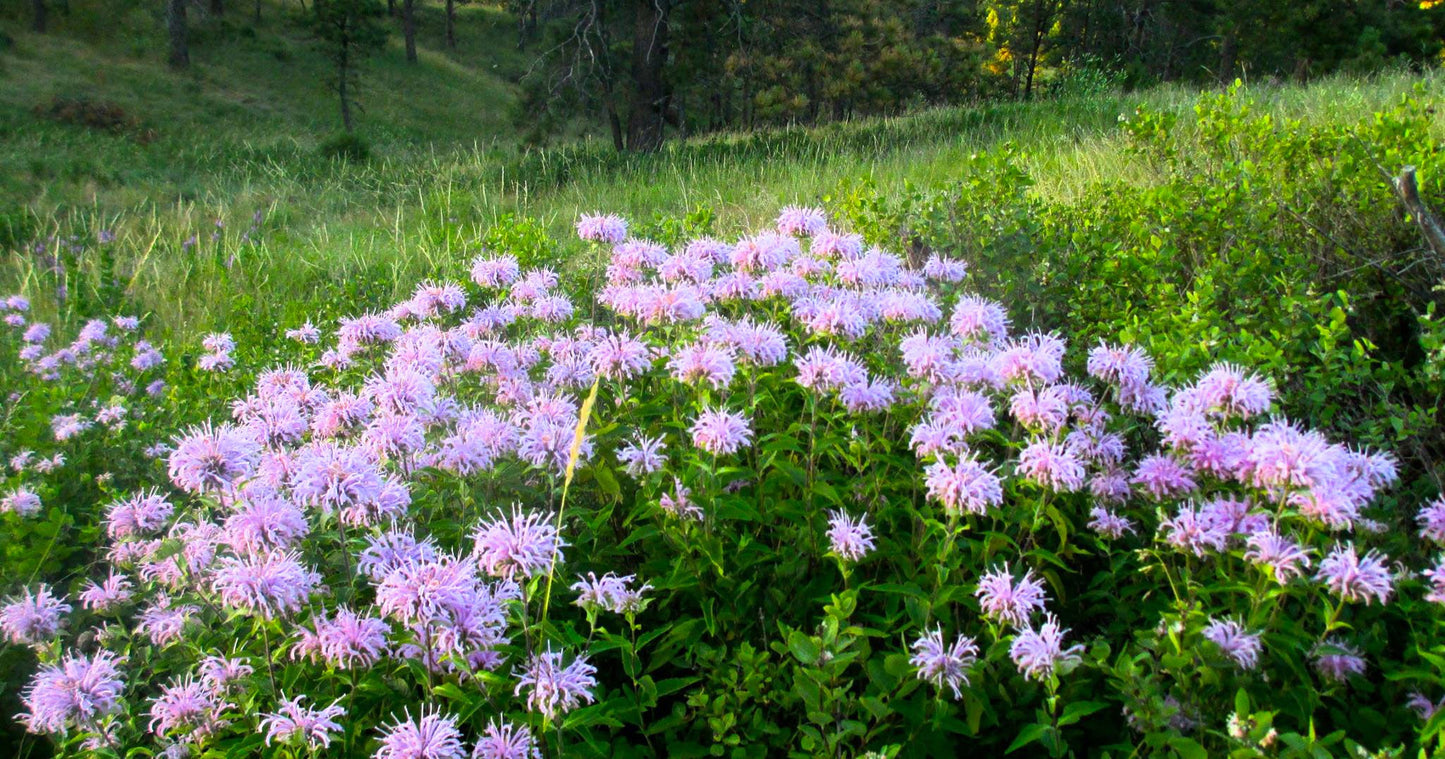Bergamot- Wild
Couldn't load pickup availability
Description
Wild Bergamot, also known as Monarda fistulosa, is a native herb that features vibrant, showy flowers and aromatic foliage. With its distinctive lavender to pinkish-purple blooms and a sweet, minty fragrance, Wild Bergamot is a favorite among pollinators such as bees, butterflies, and hummingbirds. This perennial herb thrives in a variety of garden settings, from wildflower meadows to herb gardens. Known for its medicinal and culinary uses, Wild Bergamot is cherished for its versatility and natural beauty.
Why Choose Bergamot - Wild
- Native and Hardy: Wild Bergamot is native to North America and is known for its hardiness. It thrives in a range of growing conditions, making it a great choice for gardeners looking for a resilient, low-maintenance plant.
- Pollinator-Friendly: This plant attracts a variety of pollinators, including bees, butterflies, and hummingbirds, making it an ideal addition to gardens aiming to support local wildlife and promote biodiversity.
- Unique Fragrance: The aromatic leaves and flowers of Wild Bergamot offer a delightful, minty scent that enhances the sensory experience of your garden, while its medicinal qualities make it a useful addition to any herb garden.
- Aesthetic Appeal: Wild Bergamot produces beautiful clusters of lavender to pinkish-purple flowers, adding color and texture to flower beds, meadows, or naturalized areas in your landscape.
How to Grow and Care for Bergamot - Wild
- Planting: Wild Bergamot prefers well-drained soil in full sun to partial shade. It can tolerate a range of soil types, but it thrives best in slightly acidic to neutral soils. It is an excellent choice for planting in wildflower meadows, cottage gardens, or as part of a pollinator garden.
- Watering: Once established, Wild Bergamot is drought-tolerant, but it benefits from regular watering, especially during hot and dry spells. Avoid over-watering as it can lead to root rot.
- Soil: This plant is adaptable to a variety of soil types, including clay and sandy soils, but prefers moderately fertile, well-drained soil. Adding organic matter will enhance soil structure and support healthy growth.
- Pruning: Pruning helps maintain the plant’s shape and encourages new growth. Cut back the spent flowers to prevent self-seeding if you do not want the plant to spread. Deadheading can also help promote a second bloom.
- Fertilization: Wild Bergamot is relatively low-maintenance and typically does not require heavy fertilization. A light application of organic fertilizer in the spring can help support healthy growth, but be cautious not to over-fertilize.
Benefits of Growing Bergamot - Wild
- Natural Pest Control: The aromatic oils in Wild Bergamot help repel pests, making it a beneficial plant for organic gardens and vegetable patches. Its scent can act as a natural deterrent for certain insect pests.
- Pollinator Support: Wild Bergamot’s vibrant flowers attract a wide range of pollinators, making it an excellent choice for those looking to enhance biodiversity and attract beneficial insects to their gardens.
- Medicinal Qualities: Wild Bergamot has been used traditionally in herbal medicine for its calming properties. It is commonly brewed as an herbal tea to help alleviate stress, digestive issues, and cold symptoms. The leaves and flowers can also be used in poultices to treat minor wounds and skin irritations.
- Culinary Uses: The leaves of Wild Bergamot can be used in herbal teas or as a flavoring in cooking. It imparts a minty, slightly spicy flavor, making it a great addition to salads, soups, and even desserts.
- Aesthetic Value: With its unique and colorful blooms, Wild Bergamot adds a splash of beauty to any garden. Its tall, striking flowers make it an excellent focal point for borders or mixed perennial beds.
Wild Bergamot is a beautiful, versatile, and hardy plant that offers a combination of aesthetic value, pollinator support, and practical uses in both the kitchen and the home apothecary. Whether you are looking to attract wildlife, enjoy its medicinal benefits, or simply add color and fragrance to your garden, this native herb is a wonderful addition to any garden setting.









